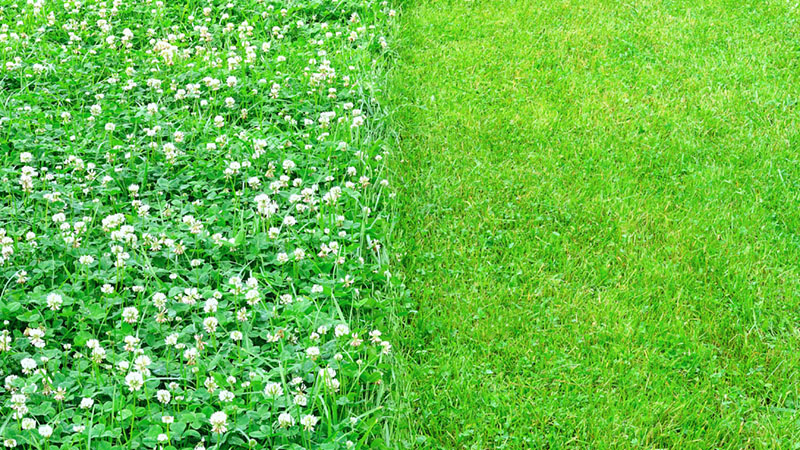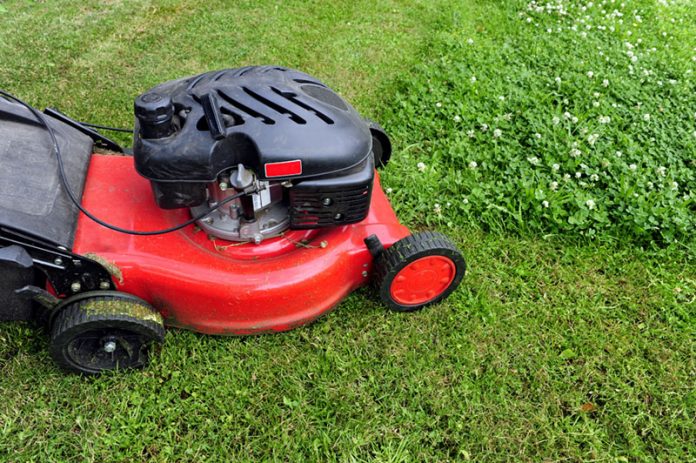The smell, look, and feel of lush, freshly-cut bright green grass makes for an experience like no other. Unfortunately, having a grass lawn also makes for an environmental impact like no other. Because of this, and the fact that our lawns take up a significant amount of time to keep looking great, many people are considering easier and more environmentally friendly alternatives, such as a microclover lawn.
So, why should you consider a microclover lawn? It’s one popular alternative, and this article will touch on the reasons why.
The Low-Down on Our Lawns
It’s no doubt that our word would look vastly different without our healthy, manicured lawns—but perhaps it should. Grass lawns account for more than 50 million acres of land in the U.S. This isn’t too problematic in and of itself, but when you consider how we care for our lawns, we can see why many people are starting to do something different.
We’re all familiar with “the grass is always greener” adage, but when climate change means hotter, dryer, browner conditions, keeping that grass green requires a lot of water—3 trillion gallons of water a year, to be exact.
We also use hundreds of millions of gallons of gas to keep our lawns mowed. While it may seem like a mower is small enough to have a small impact, they actually contribute to 5% of America’s air pollution. Those drips of gasoline while you’re refilling the tank? They’re just part of more than 17 million gallons of fuel that don’t make their way into the tank—an amount that’s higher than the Exxon Valdez oil spill.
We’re also intentionally putting petroleum-based products on our lawns, which are causing their own set of problems.
Every year, Americans spend roughly $36 billion to maintain our yards. Not only are these fertilizers, pesticides, and herbicides a big expense for us, but they’re also costing the earth. And, unless we’re making our own eco-friendly weed killer, we’re contributing to dangerous runoff that can lead to toxic chemicals entering our waterways and damaging marine life.
Not only that, but the chemicals we’re adding to grass end up reducing one of the top benefits of lawns, carbon sequestration, where carbon dioxide is absorbed from the atmosphere and contributes to healthy grass growth.
No wonder the no-mow movement is taking off and people are beginning to turn their lawns into wildflower or native plant oases.
But for many of us, unfortunately the cultural norms about what an outdoor space should look like are preventing us from ditching our lawns right away.
However, there is a relatively simple solution that can help us at least minimize the chemicals required to support our lawns: microclover.
Why Should You Consider a Microclover Lawn?
Microclover, or Trifolium repens, is a small variety of white Dutch clover, the same clover sought out for its lucky four-leaved structure. The larger variety has been a traditional addition to many lawns, but its smaller version is making neighbors green with envy these days.


There are a few reasons why more and more lawns are becoming speckled with microclover.
It can be maintained like grass
Microclover isn’t a grass, but it can blend in with the rest of your lawn just like grass. The perennial plant behaves similarly to grass, it becomes dormant during the cold winter months, then wakes up again to warmer spring temperatures.
Not only does microclover behave like grass, but it can also tolerate regular mowing. Compared to its larger variety, it also blends in with the rest of your lawn because it doesn’t clump as much. Being mowed with the rest of your lawn will also prevent it from producing flowers, meaning that it will look attractive to even the most lawn-obsessed homeowner.
Behaving better than grass, microclover is far more tolerant to dog waste, and won’t form brown, dead patches when exposed to high-nitrogen urine.
It acts as a fertilizer
Clover was an extremely popular lawn addition prior to the 1950s. Before the introduction of broadleaf herbicides (which can kill clover and microclover), it was one of the best nitrogen-fixing plants (legumes) to improve turf grass.
A nitrogen-fixing plant is one that forms a relationship with Rhizobium soil bacteria, allowing it to absorb atmospheric nitrogen gas and transform it into its organic form, which can be taken up by surrounding plants. By “fixing” nitrogen into a type that can feed plants, it acts as its own fertilizer and can help your lawn thrive without requiring harsh chemicals.
It attracts beneficial animals and insects
It’s no secret that clover and bees go together, and our favorite pollinator friends are big fans of microclover, too. If the microclover is allowed to reach a height in which it produces flowers, bees will be attracted to it—especially in late-spring to early summer.
In addition, when we trade in a monoculture (single species) of grass for a mixed-species lawn, some of its environmental benefits include the fact that it becomes a habitat for many different birds and insects. Similarly, having multiple species provides a more suitable habitat for soil organisms than a single species would on its own.
It suppresses weeds and supports grass
Microclover works to suppress weeds in a few ways. First, when used to fill in gaps in a lawn, it can provide a dense cover that helps to outgrow any weeds. As a broadleaf plant, microclover is especially beneficial for ridding lawns of dandelions and violets and can significantly cut down the use of herbicides.
Clover and microclover have also been known to draw up trace minerals through their roots. These essential nutrients become accumulated in the plant, and once it decomposes, it provides beneficial nutrients to nearby grass, making it more resistant to disease.
How to Grow a Microclover Lawn
If you’re able to, it’s better to purchase a seed mix that contains both grass and clover. This will not only look most like a traditional lawn, but will also make use of microclover’s ability to act as a fertilizer.
Similarly, reseeding with a microclover-grass mix will also work well.
You can also find a specific mix that’s suitable for over-seeding. Simply cut the lawn as short as possible, remove any patches of thatch, and spread by hand or use a broadcast spreader. If the mix you choose isn’t blended with grass seed, you might want to mix it with some other material (like sand or compost) so that it provides a more even spread.
Regardless of the method you choose, ensure that the seeded soil remains moist to provide the best rates of germination. In about 7-10 days, you should see your microclover begin to sprout!
While it is technically a perennial plant, it is known to be a somewhat short-lived perennial, and might need to be reseeded every couple of years.
It is important to note that microclover isn’t the most shade tolerant plant, nor does it do well when exposed to very strong summer sun, or prolonged heat and drought.
Final Thoughts on Microclover Lawns
While this is a technique that’s been used for hundreds of years, using microclover in lawns has recently become popular again.
That being said, we’d love to know if anyone has incorporated microclover into their own lawns.
Please share how it’s worked out for you or if you have any microclover lawn tips in the comments below!
This post was originally published on June 30, 2021 and updated on May 9, 2023.














